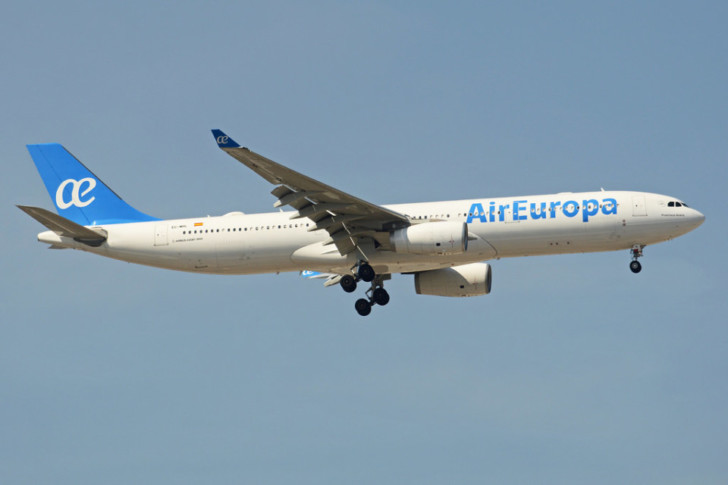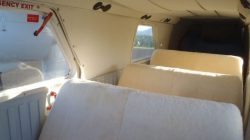International Airlines Group (IAG), the parent company of British Airways and Iberia, has reached a deal to purchase SkyTeam member Air Europa for $1.1 billion. Air Europa is the second largest airline at Madrid, the primary hub for Iberia, and the second largest airline in Spain by available seat kilometers (ASKs). The carrier operates a fleet of 65 aircraft and transported 11.8 million passengers in 2018, serving 69 destinations across Europe, North Africa, the Americas, and the Middle East. In 2018, the carrier reported $2.34 billion in revenue and $111.5 million in operating profit. According to news reports, Iberia will initially operate Air Europa as a standalone brand before eventually consolidating by 2025.

Letting IAG Buy Air Europa Would Be Staggeringly Uncompetitive
If approved by regulators, the deal would give IAG a dominant position in the Spanish air travel market, particularly on long distance flights. IAG already controls Iberia, the dominant player in Madrid, and ultra-low cost carrier (ULCC) Vueling, the dominant player in Barcelona. It also operates LEVEL, a long-haul low-cost airline operating in Barcelona (and Paris Orly). Iberia and Vueling are the two largest airlines in Spain, Air Europa is the third biggest.
Taking Air Europa off the board would dramatically reduce competition across the carrier’s current network. Few if any additional routes will be enabled by the additional bulk of the merged carrier. Instead, it is far more likely that Iberia will draw down much of the Air Europa network (particularly on short haul flights) and consolidate the Madrid hub. In particular, there are three types of passengers who would suffer the most due to the merger; domestic passengers within Spain, travelers from Spain to Latin America, and passengers flying between South America and Europe more broadly.
Combined Carrier Would Have 84% Domestic Marketshare Within Spain
The title above isn’t a typo; Air Europa, Iberia, and Vueling together operate about 84% of the seat capacity in the domestic Spanish market. Looking specifically at Madrid, the merger would create a monopoly on nine domestic routes (red routes in the map below) and reduce competition from three to two carriers on a further three (yellow).
Air Europa Domestic Network at Madrid
The monopoly markets are primarily domestic business travel markets from Madrid (excluding Fuerteventura and Lanzarote), and while there is high speed rail serving as competition for some of these routes the merger is still likely to push fares upwards substantially. In many of these markets, the two carriers each operate 3+ daily flights, and Iberia is likely to reduce duplicative capacity. On a few routes, the carrier schedules are more dispersed, and in those cases passengers may benefit from additional frequency, though it is likely to be paired with higher fares. In contrast, more leisure oriented routes to the Canary Islands,
Europe and North Africa are More Competitive, But the Merger Still Reduces Competition
Meanwhile on routes between Madrid and Europe or North Africa. Air Europa flies mostly to major European cities like Rome, Paris, and London, and these routes are more competitive, with European full service carriers and ULCCs alike offering substantial capacity to and from Madrid. However, in many markets, the merger will reduce competition from three carriers down to two. And because Air Europa tended to have lower prices than most European full service carriers, this will still harm passengers on routes to places like Amsterdam, Munich, and Zurich.
As the map below shows, the only routes where the merged carrier would have a monopoly are Venice and Dusseldorf. In the case of Dusseldorf, calling it a monopoly is slightly unfair, as the merged carrier would still face competition in the broader Rhine-Ruhr metro area (which Dusseldorf is a part of) via Ryanair’s flights to Cologne-Bonn. The routes where competition would drop from three airlines to two include Munich, Zurich, Amsterdam, Tel Aviv, and Marrakesh (which would still have competition from Ryanair). But the majority of short and medium haul routes operated by Air Europa today would retain three or more competing carriers.
Air Europa Short and Medium Haul Network at Madrid
The Loss of Air Europa’s Long Haul Network Is Likely to Drive Up Fares
Merging Air Europa’s long haul network into Iberia would be a substantial loss for both origin and destination (O&D) travelers flying between Latin America and Spain, and passengers connecting between South America and Europe. As the map below shows, an Air Europa-Iberia merger would create a monopoly on five long haul routes and drop the number of competitors from three to two on an additional four. In these markets, Air Europa is the primary pricing constraint on Iberia – that would disappear post-merger.
Of the remaining 13 long haul routes at Madrid, six are operated exclusively by Air Europa, and seven would retain competition from at least three carriers. However, even in these markets, the merger is likely to have an anticompetitive impact. Of the routes with multiple competitors, Cancun, Havana, and Santa Cruz are only served by leisure carriers who don’t offer meaningful connectivity via Madrid. This harms O&D passengers in those markets traveling to and from the rest of Europe.
At Sao Paulo and Lima meanwhile, LATAM Airlines is the main competitor. The problem with this is that LATAM and IAG are currently pursuing a joint venture between Europe and South America. If said joint venture is approved, both of those markets would drop from three competitors to two, and in each case (Plus Ultra at Lima and Air China at Sao Paulo), the third competitor would operate less than daily flights. Only New York JFK (with multiple competitors at the same airport plus United down the road at Newark) would retain substantial competition, and not suffer any ill effects in terms of onwards connectivity (since there are multiple nonstop and one stop competitors at JFK for every short and medium haul route flown by Air Europa).
The Air Europa monopoly long haul routes (shown in orange below) in theory should not lose any competition as a result of the merger. However, the worry would be that these routes might not be profitable with Iberia’s higher operating costs (which Air Europa would likely take on post-merger), and as a result passengers might lose nonstop connectivity.
From all of these destinations, a secondary competitive challenge is the reduction of competition on one-stop itineraries to Europe. For passengers flying from Latin America to Europa, the two best-positioned hubs are Lisbon (home to TAP Portugal) and Madrid (home to Iberia and Air Europa). An analysis published at airliners.net found that 36% of Air Europa passengers were connecting over Madrid and that the largest connecting traffic flows were between Latin America and Europe. The same flow dominated for TAP Portugal at Lisbon (42% connecting) and Iberia at Madrid (49% connecting). With the merger, IAG will be able to eliminate one of the two main competitors for this traffic flow, which is likely to push up one-stop fares substantially.
Air Europa Long Haul Network at Madrid
On the whole, an IAG acquisition of Iberia would substantially reduce competition in the Spanish domestic market, the Spanish long haul market, and the broader market between Europe and Latin America.


